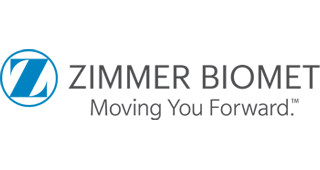Long term results of closing wedge high tibial osteotomy in varus osteoarthritic knee
ESSKA Academy. Maione A. 05/09/18; 209567; P09-1036
Abstract
Discussion Forum (0)
Rate & Comment (0)
Objectives: Varus malalignment is most frequent due to the loads acting on the joint during normal gait. There are many surgical options for treating osteoarthritis (OA) of the varus knee, such as arthroscopic procedures, closing (CW) or opening-wedge (OW) high tibial osteotomy (HTO) and joint replacement. The purpose of this study was to evaluate the long term survivorship of CW-HTO, patient's related variables influencing outcome and conversione rate to arthroplasty.
Methods: A retrospective, non randomized, monocentric study was performed in our Institution considering 166 patients who underwent CW-HTO between January 1989 and January 2012.
Patients with a complete knee radiographic evaluation and minimum follow-up of 4 years were included. Patients affected by inflammatory arthropaties or tricompartmental OA were excluded.
The final population was composed by 82 patients (94 knees), 35 females and 47 males, mean age 49,62 years (range, 19 -73). All patients were evaluated clinically (HSS Score, Tegner Scale, VAS and Crosby-Insall Grading) and radiographically (OA staging, mechanical axis, tibial slope and metaphyseal varus).
Univariate and multivariate analysis were performed using SPSS statistic 20.0 and the statistical significance was achieved if p < 0.05.
The Cox proportional hazard was used for evaluating the relationship between "survivorship" of osteotomy and possible associated factors (age, gender, radiographic characteristics).
Results: Mean follow-up was 11,96 ± 7,23 (range, 4-28 years). VAS score significantly decreased from 7,92 to 1,64 (p<0,05) at last follow-up, HSS Score and Tegner Scale increased significantly respectively from 70,87 to 93,27 and from 1,37 to 2,84 at the last control.
According to the Crosby-Insall Grading System, 80 patients( 97,4%) reported excellent-good results.
HKA angle decreased from 6,9° to 2,6°, tibial slope decreased from 10,1° to 6,8° and finally the metaphyseal varus according to Levigne decreased from 4,2° to 2,1° at the last follow-up.
Adverse events were reported in 3%.
Osteotomy survivorship was 95% at 10 years, 90% at 15 years and 80% at 20 years.
Sixteen revisions (9,6%) at a mean period of 12,84 years (range, 1-20 years).
Both HKA correction and age at the time of surgery resulted affecting survivorship (p<0.05).
Over-50 years females showed 3 time faster loss of correction than males (p<0.01).
Conclusions: The most important finding of this study is that CW-HTO is still a valid option for the treatment of medial OA in varus knees, with successful results in both clinical and radiological outcomes.
Data alone don't support one specific HTO technique but the choice can be based on surgeon's preference and patient's characteristics.
Methods: A retrospective, non randomized, monocentric study was performed in our Institution considering 166 patients who underwent CW-HTO between January 1989 and January 2012.
Patients with a complete knee radiographic evaluation and minimum follow-up of 4 years were included. Patients affected by inflammatory arthropaties or tricompartmental OA were excluded.
The final population was composed by 82 patients (94 knees), 35 females and 47 males, mean age 49,62 years (range, 19 -73). All patients were evaluated clinically (HSS Score, Tegner Scale, VAS and Crosby-Insall Grading) and radiographically (OA staging, mechanical axis, tibial slope and metaphyseal varus).
Univariate and multivariate analysis were performed using SPSS statistic 20.0 and the statistical significance was achieved if p < 0.05.
The Cox proportional hazard was used for evaluating the relationship between "survivorship" of osteotomy and possible associated factors (age, gender, radiographic characteristics).
Results: Mean follow-up was 11,96 ± 7,23 (range, 4-28 years). VAS score significantly decreased from 7,92 to 1,64 (p<0,05) at last follow-up, HSS Score and Tegner Scale increased significantly respectively from 70,87 to 93,27 and from 1,37 to 2,84 at the last control.
According to the Crosby-Insall Grading System, 80 patients( 97,4%) reported excellent-good results.
HKA angle decreased from 6,9° to 2,6°, tibial slope decreased from 10,1° to 6,8° and finally the metaphyseal varus according to Levigne decreased from 4,2° to 2,1° at the last follow-up.
Adverse events were reported in 3%.
Osteotomy survivorship was 95% at 10 years, 90% at 15 years and 80% at 20 years.
Sixteen revisions (9,6%) at a mean period of 12,84 years (range, 1-20 years).
Both HKA correction and age at the time of surgery resulted affecting survivorship (p<0.05).
Over-50 years females showed 3 time faster loss of correction than males (p<0.01).
Conclusions: The most important finding of this study is that CW-HTO is still a valid option for the treatment of medial OA in varus knees, with successful results in both clinical and radiological outcomes.
Data alone don't support one specific HTO technique but the choice can be based on surgeon's preference and patient's characteristics.
Keywords:
HTO, closing wedge, Knee, long term-FU
Objectives: Varus malalignment is most frequent due to the loads acting on the joint during normal gait. There are many surgical options for treating osteoarthritis (OA) of the varus knee, such as arthroscopic procedures, closing (CW) or opening-wedge (OW) high tibial osteotomy (HTO) and joint replacement. The purpose of this study was to evaluate the long term survivorship of CW-HTO, patient's related variables influencing outcome and conversione rate to arthroplasty.
Methods: A retrospective, non randomized, monocentric study was performed in our Institution considering 166 patients who underwent CW-HTO between January 1989 and January 2012.
Patients with a complete knee radiographic evaluation and minimum follow-up of 4 years were included. Patients affected by inflammatory arthropaties or tricompartmental OA were excluded.
The final population was composed by 82 patients (94 knees), 35 females and 47 males, mean age 49,62 years (range, 19 -73). All patients were evaluated clinically (HSS Score, Tegner Scale, VAS and Crosby-Insall Grading) and radiographically (OA staging, mechanical axis, tibial slope and metaphyseal varus).
Univariate and multivariate analysis were performed using SPSS statistic 20.0 and the statistical significance was achieved if p < 0.05.
The Cox proportional hazard was used for evaluating the relationship between "survivorship" of osteotomy and possible associated factors (age, gender, radiographic characteristics).
Results: Mean follow-up was 11,96 ± 7,23 (range, 4-28 years). VAS score significantly decreased from 7,92 to 1,64 (p<0,05) at last follow-up, HSS Score and Tegner Scale increased significantly respectively from 70,87 to 93,27 and from 1,37 to 2,84 at the last control.
According to the Crosby-Insall Grading System, 80 patients( 97,4%) reported excellent-good results.
HKA angle decreased from 6,9° to 2,6°, tibial slope decreased from 10,1° to 6,8° and finally the metaphyseal varus according to Levigne decreased from 4,2° to 2,1° at the last follow-up.
Adverse events were reported in 3%.
Osteotomy survivorship was 95% at 10 years, 90% at 15 years and 80% at 20 years.
Sixteen revisions (9,6%) at a mean period of 12,84 years (range, 1-20 years).
Both HKA correction and age at the time of surgery resulted affecting survivorship (p<0.05).
Over-50 years females showed 3 time faster loss of correction than males (p<0.01).
Conclusions: The most important finding of this study is that CW-HTO is still a valid option for the treatment of medial OA in varus knees, with successful results in both clinical and radiological outcomes.
Data alone don't support one specific HTO technique but the choice can be based on surgeon's preference and patient's characteristics.
Methods: A retrospective, non randomized, monocentric study was performed in our Institution considering 166 patients who underwent CW-HTO between January 1989 and January 2012.
Patients with a complete knee radiographic evaluation and minimum follow-up of 4 years were included. Patients affected by inflammatory arthropaties or tricompartmental OA were excluded.
The final population was composed by 82 patients (94 knees), 35 females and 47 males, mean age 49,62 years (range, 19 -73). All patients were evaluated clinically (HSS Score, Tegner Scale, VAS and Crosby-Insall Grading) and radiographically (OA staging, mechanical axis, tibial slope and metaphyseal varus).
Univariate and multivariate analysis were performed using SPSS statistic 20.0 and the statistical significance was achieved if p < 0.05.
The Cox proportional hazard was used for evaluating the relationship between "survivorship" of osteotomy and possible associated factors (age, gender, radiographic characteristics).
Results: Mean follow-up was 11,96 ± 7,23 (range, 4-28 years). VAS score significantly decreased from 7,92 to 1,64 (p<0,05) at last follow-up, HSS Score and Tegner Scale increased significantly respectively from 70,87 to 93,27 and from 1,37 to 2,84 at the last control.
According to the Crosby-Insall Grading System, 80 patients( 97,4%) reported excellent-good results.
HKA angle decreased from 6,9° to 2,6°, tibial slope decreased from 10,1° to 6,8° and finally the metaphyseal varus according to Levigne decreased from 4,2° to 2,1° at the last follow-up.
Adverse events were reported in 3%.
Osteotomy survivorship was 95% at 10 years, 90% at 15 years and 80% at 20 years.
Sixteen revisions (9,6%) at a mean period of 12,84 years (range, 1-20 years).
Both HKA correction and age at the time of surgery resulted affecting survivorship (p<0.05).
Over-50 years females showed 3 time faster loss of correction than males (p<0.01).
Conclusions: The most important finding of this study is that CW-HTO is still a valid option for the treatment of medial OA in varus knees, with successful results in both clinical and radiological outcomes.
Data alone don't support one specific HTO technique but the choice can be based on surgeon's preference and patient's characteristics.
Keywords:
HTO, closing wedge, Knee, long term-FU
Code of conduct/disclaimer available in General Terms & Conditions
{{ help_message }}
{{filter}}







